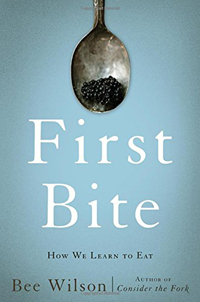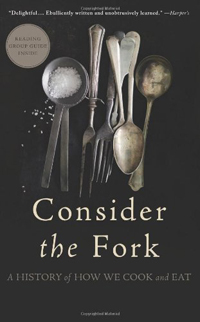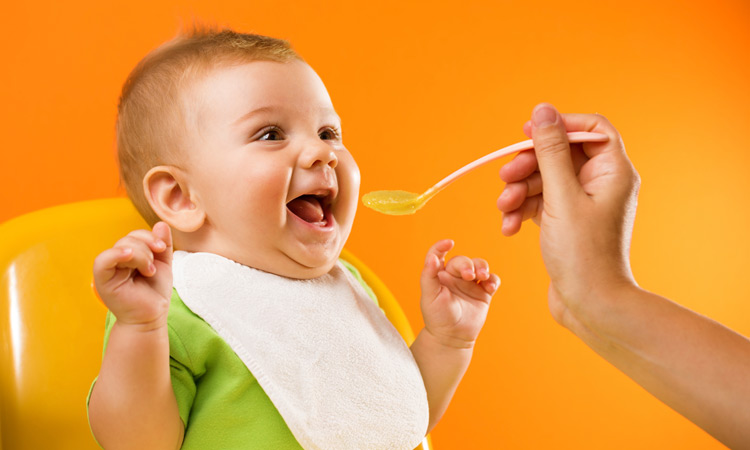 I was reading Bee Wilson’s delightful First Bite: How We Learn to Eat right after Halloween, when every night I found myself pilfering a couple of candies from my kids’ trick-or-treat stash, despite the fact that I’m not a fan of overly sweet, highly processed confections. (I’m partial to dark chocolate.) Wilson helped me understand my own illogical behavior.
I was reading Bee Wilson’s delightful First Bite: How We Learn to Eat right after Halloween, when every night I found myself pilfering a couple of candies from my kids’ trick-or-treat stash, despite the fact that I’m not a fan of overly sweet, highly processed confections. (I’m partial to dark chocolate.) Wilson helped me understand my own illogical behavior.
In a book whose aim is to demonstrate that our eating habits are learned–and thus can be relearned—Wilson observes that “memory is the single most powerful driving force in how we learn to eat; it shapes all of our yearnings.” She would surely point out that I was drawn to my children’s Halloween candy not because I liked it, or even because I was hungry, but because it pleasurably evoked my own happy childhood memories.
With diets in America and around the world increasingly built upon processed food low in nutritional value and high in salt, sugar, and fat–resulting in an epidemic of children who are simultaneously overweight and malnourished–memory’s strong grip on our palates has disturbing repercussions. The power of junk foods “to insinuate themselves into some of our most precious memories—of family, of happiness, of childhood—should be a pressing concern for everyone who is serious about improving anyone’s diet, including their own,” Wilson writes.
 Lucky for us, the British food writer, author of 2012’s Consider the Fork, among other books, has plenty of practical advice for improving our culture’s thorny relationship with food. Drawing on insights from psychologists, neuroscientists, and nutritionists, Wilson demonstrates that both adults and children can be trained to eat structured meals throughout the day, to notice when they’re hungry and when they’re full, and to develop a preference for healthy food over junk.
Lucky for us, the British food writer, author of 2012’s Consider the Fork, among other books, has plenty of practical advice for improving our culture’s thorny relationship with food. Drawing on insights from psychologists, neuroscientists, and nutritionists, Wilson demonstrates that both adults and children can be trained to eat structured meals throughout the day, to notice when they’re hungry and when they’re full, and to develop a preference for healthy food over junk.
Unlike some food writers, Wilson is no scold. She’s charmingly relatable, peppering her narrative with warm anecdotes about her own fraught relationship with eating during her teenage years and her occasionally misguided attempts to raise her kids to have a healthy perspective on food. She reveals her shame at regularly–and counter-productively–forcing food into the mouth of her extremely picky toddler son. (“I thought you were an awful mother,” admits an acquaintance who’d witnessed one of these tense episodes.)
The book is wide-ranging, serving up smart takes on everything from the latest treatments for anorexia to the sharp rise in obesity among Kuwaiti teens. In one incisive passage, she blasts the recently ubiquitous birthday cake ice cream. I had vague misgivings about this sickly-sweet flavor when my kids started requesting it, but I hadn’t given it much thought.
Wilson lasers in on precisely what’s wrong with the “lurid multicolored confection with sprinkles, clots of frosting, and chunks of cake running through it.” Birthday cake used to be a special treat commemorating a significant milestone. “But if you can eat it in a cone any day of the year, on a whim, the whole point is lost,” Wilson observes. “The existence of birthday cake ice cream suggests that we can no longer distinguish celebration foods from everyday ones.”
Not that Wilson thinks eating shouldn’t be celebratory—she just wants us to rejoice in the proper fare. The key, she says, is “to make healthy food and pleasurable food one and the same.” Without suggesting that it’s easy, Wilson’s valuable book shows the way.
Click here to get inspired by Rose’s easy steps to positively change your mind



